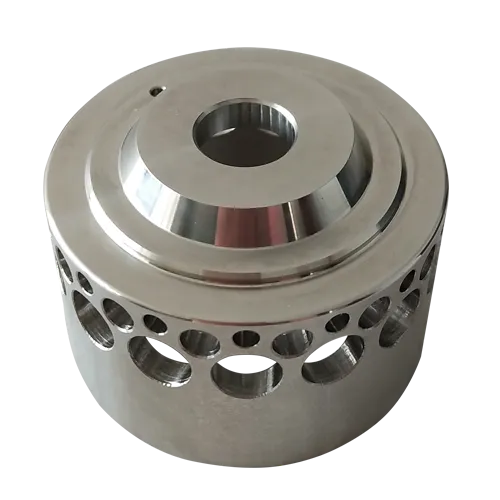Mobile:+86-311-808-126-83
Email:info@ydcastings.com
Investment Casting Techniques for Impellers in Various Industries
Impeller Investment Casting Revolutionizing Manufacturing Efficiency
In the realm of advanced manufacturing, investment casting has emerged as a pivotal technique for producing high-precision components, particularly in the aerospace, automotive, and energy sectors. One notable application of this process is in the production of impellers, essential components in a variety of fluid systems, including pumps, turbines, and compressors. This article delves into the significance of impeller investment casting, exploring the process, advantages, applications, and future trends.
Understanding Investment Casting
Investment casting, often referred to as lost-wax casting, is a manufacturing process that creates intricate metal parts by using a wax model as a template. Initially, a wax pattern is created, which is then coated with a refractory ceramic material to form a mold. Once the mold is formed, the wax is melted and drained away, leaving a cavity that reflects the original pattern. Molten metal is then poured into this cavity to form the desired component.
This technique is particularly well-suited for impellers, which require precise dimensions and complex geometries. Given the intricate designs of impellers, traditional methods such as machining can be time-consuming and costly. In contrast, investment casting offers an efficient alternative that minimizes waste and reduces production costs.
Advantages of Impeller Investment Casting
1. Precision and Accuracy One of the standout benefits of investment casting is its ability to produce components with exceptional precision. Impellers often have complex shapes and tight tolerances that investment casting can achieve, ensuring optimal performance in fluid dynamics.
2. Material Versatility Investment casting can be performed with a wide range of materials, including various alloys of steel, aluminum, and titanium. This versatility allows manufacturers to tailor the impeller’s properties according to the specific requirements of their applications, such as corrosion resistance, strength, and weight.
3. Reduced Lead Times The investment casting process often requires fewer steps than traditional manufacturing methods, leading to shorter lead times. This rapid production capability is critical in industries like aerospace, where timely delivery is essential.
4. Minimized Waste Unlike machining processes that cut away material to create a part, investment casting uses a near-net-shape approach. This means that less material is wasted, making it a more environmentally friendly option. The reduction in waste contributes to lower production costs and supports sustainability initiatives.
impeller investment casting

5. Complex Geometries The ability to create complex designs without the need for extensive tooling makes investment casting ideal for producing impellers that have intricate flow passages and geometries required for efficient operation.
Applications of Impeller Investment Casting
The applications of investment-cast impellers are widespread, particularly in industries that rely on fluid movement. In the aerospace sector, for example, investment casting is used to produce fuel pump impellers, which must withstand rigorous operating conditions while maintaining exceptional performance.
Similarly, in the automotive industry, investment-cast impellers are used in turbochargers and water pumps, where performance and reliability are crucial for engine efficiency. The energy sector also benefits from this technology, with impellers used in various engines and turbines that harness kinetic energy from fluids.
Future Trends
As industries seek to enhance productivity and reduce costs, the demand for advanced manufacturing techniques like investment casting is projected to grow. Innovations in materials science, such as the development of high-performance alloys and composites, will further expand the capabilities of investment casting. Additionally, advancements in additive manufacturing and 3D printing technologies are likely to complement traditional investment casting, allowing for even greater design freedom and customization.
Moreover, the integration of Industry 4.0 concepts, including automation and smart manufacturing practices, will optimize the investment casting process. Real-time monitoring and control systems can increase efficiency, improve quality control, and enhance the overall reliability of the production process.
Conclusion
Impeller investment casting exemplifies how modern manufacturing techniques can revolutionize the production of complex components. By providing unparalleled precision, material versatility, and reduced waste, investment casting stands as a crucial method for meeting the demands of various industries. As technology continues to advance, the prospects for investment casting, particularly in the context of impeller production, look promising, ensuring that it remains at the forefront of manufacturing excellence.
-
Why Should You Invest in Superior Pump Castings for Your Equipment?NewsJun.09,2025
-
Unlock Performance Potential with Stainless Impellers and Aluminum End CapsNewsJun.09,2025
-
Revolutionize Your Machinery with Superior Cast Iron and Aluminum ComponentsNewsJun.09,2025
-
Revolutionize Fluid Dynamics with Premium Pump ComponentsNewsJun.09,2025
-
Optimizing Industrial Systems with Essential Valve ComponentsNewsJun.09,2025
-
Elevate Grid Efficiency with High-Precision Power CastingsNewsJun.09,2025











